Talisker
Talisker was, until 2017, the only distillery on the Isle of Skye in the group of the Inner Hebridian Islands. It produces a peated, very spicy Single Malt Scotch.
| Information about the Distillery | |
|---|---|
| Scotland, Islands | |
| -6.356738 57.302331 | |
| Active | |
| Diageo | |
|
2 x 10,000 l
Normal
|
|
|
3 x 7,479 l
Normal
|
|
|
6 x 50,000 l
|
|
| 8 t | |
| 1832 | |
| 2,600,000 l |
| Average tasting notes Tasting notes |
i
|
|
|---|---|---|
|
Nosing
Peat Smoke:
Peat Smoke:
Maritime Notes:
Seaweed:
Sweet:
Maritime Notes:
Seaweed:
Spices:
Sweet:
Fruit:
Salt:
Zitrus:
Sherry:
Spices:
Salt:
Malt:
Zitrus:
Fruit:
Bonfire Smoke:
Oak:
Vanilla:
Pepper:
Malt:
Sherry:
Caramel:
Bonfire Smoke:
Pepper:
Oak:
Herb:
Vanilla:
Caramel:
Iodine:
Orange:
Herb:
Ham:
Leather:
Chili:
Medicinal Smoke:
Herbs:
Berries:
Lemon:
Orange:
Dried Fruit:
Iodine:
Leather:
Honey:
Ham:
Chili:
Medicinal Smoke:
Alcohol:
Lemon:
Nuts:
Herbs:
Plum:
Berries:
Dried Fruit:
Raisin:
Chocolate:
Honey:
Alcohol:
Heather:
Pear:
Plum:
Apple:
Banana:
Raisin:
Chocolate:
Dark Chocolate:
Grape:
Heather:
Tobacco:
Pear:
Banana:
Apple:
Oil:
Walnut:
Dark Chocolate:
Tobacco:
Grape:
Peach:
Oil:
Walnut:
Cherry:
Grass:
Nutmeg:
Cinnamon:
Cherry:
Blackberry:
Tropical Fruit:
Peach:
Date:
Grapefruit:
Nutmeg:
Tropical Fruit:
Fig:
Almonds:
Lemon Peel:
Floral:
Grass:
Green Apple:
Hay:
Coffee:
Cinnamon:
Mint:
Blackberry:
Lime:
Wheat:
Clove:
Date:
Almonds:
Nuts:
Fig:
Hay:
Barley:
Barley:
Grapefruit:
Lemon Peel:
Floral:
Green Apple:
Hazelnut:
Coffee:
Ginger:
Wheat:
Clove:
Mint:
Ginger:
Cake:
Black Currant:
Hazelnut:
Lime:
Cake:
Black Currant:
Coconut:
Strawberry:
Red Currant:
Coconut:
Rye:
Pineapple:
Melon:
Pineapple:
Melon:
Strawberry:
Anis:
Red Currant:
Rye:
Tasting
Peat Smoke:
Spices:
Peat Smoke:
Sweet:
Maritime Notes:
Pepper:
Chili:
Sweet:
Maritime Notes:
Spices:
Pepper:
Seaweed:
Chili:
Fruit:
Salt:
Malt:
Seaweed:
Oak:
Sherry:
Salt:
Fruit:
Malt:
Oak:
Zitrus:
Nuts:
Zitrus:
Bonfire Smoke:
Sherry:
Caramel:
Oil:
Herb:
Vanilla:
Caramel:
Bonfire Smoke:
Alcohol:
Dried Fruit:
Oil:
Herb:
Honey:
Vanilla:
Herbs:
Barley:
Alcohol:
Chocolate:
Dried Fruit:
Ham:
Honey:
Herbs:
Berries:
Lemon:
Orange:
Heather:
Chocolate:
Ham:
Medicinal Smoke:
Lemon:
Iodine:
Orange:
Barley:
Dark Chocolate:
Leather:
Plum:
Nuts:
Grape:
Berries:
Heather:
Ginger:
Medicinal Smoke:
Apple:
Leather:
Iodine:
Dark Chocolate:
Plum:
Coffee:
Raisin:
Ginger:
Grape:
Tobacco:
Pear:
Apple:
Coffee:
Lemon Peel:
Cinnamon:
Raisin:
Pear:
Tobacco:
Blackberry:
Clove:
Floral:
Lemon Peel:
Date:
Fig:
Cake:
Floral:
Clove:
Hay:
Cinnamon:
Peach:
Hazelnut:
Fig:
Blackberry:
Grapefruit:
Cake:
Grass:
Nutmeg:
Peach:
Cherry:
Hazelnut:
Hay:
Wheat:
Almonds:
Lime:
Cherry:
Grapefruit:
Nutmeg:
Black Currant:
Wheat:
Lime:
Grass:
Mint:
Date:
Almonds:
Black Currant:
Banana:
Pineapple:
Strawberry:
Banana:
Mint:
Pineapple:
Strawberry:
Walnut:
Red Currant:
Melon:
Red Currant:
Anis:
Walnut:
Green Apple:
Melon:
Finish
Peat Smoke:
Spices:
Peat Smoke:
Pepper:
Chili:
Sweet:
Maritime Notes:
Spices:
Pepper:
Chili:
Sweet:
Seaweed:
Oak:
Maritime Notes:
Seaweed:
Oak:
Fruit:
Herb:
Malt:
Salt:
Sherry:
Herb:
Malt:
Salt:
Fruit:
Dark Chocolate:
Sherry:
Bonfire Smoke:
Zitrus:
Dark Chocolate:
Nuts:
Zitrus:
Bonfire Smoke:
Chocolate:
Vanilla:
Herbs:
Chocolate:
Vanilla:
Alcohol:
Tobacco:
Ham:
Caramel:
Herbs:
Dried Fruit:
Leather:
Coffee:
Oil:
Nuts:
Honey:
Tobacco:
Alcohol:
Caramel:
Ham:
Heather:
Oil:
Lemon:
Coffee:
Dried Fruit:
Leather:
Iodine:
Heather:
Honey:
Berries:
Lemon:
Hay:
Iodine:
Tropical Fruit:
Ginger:
Medicinal Smoke:
Pear:
Clove:
Cinnamon:
Ginger:
Green Apple:
Hay:
Tropical Fruit:
Orange:
Berries:
Raisin:
Pear:
Grapefruit:
Clove:
Medicinal Smoke:
Cinnamon:
Grape:
Nutmeg:
Orange:
Green Apple:
Apple:
Raisin:
Hazelnut:
Grapefruit:
Hazelnut:
Grape:
Lemon Peel:
Nutmeg:
Apple:
Anis:
Mint:
Lemon Peel:
Wheat:
Barley:
Fig:
Plum:
Grass:
Barley:
Wheat:
Banana:
Blackberry:
Date:
Fig:
Cherry:
Mint:
Black Currant:
Rye:
Grass:
Banana:
Peach:
Cherry:
Black Currant:
Rye:
Lime:
Plum:
Floral:
Strawberry:
Date:
Blackberry:
Walnut:
Cake:
Peach:
Cake:
Floral:
Lime:
Walnut:
Strawberry:
|
||
The Whisky
The Whisky of the Talisker distillery is very spicy and the distillery character is often described to have a chili catch. The spicy character is most prominent in the main distillery bottling the Talisker 10 year old. There are a lot of Whiskies that have been matured in Amoroso Sherry casks to make the Scotch a bit milder and sweeter. The Whisky is peated and has a phenol content of 20 to 25 ppm. Unfortunately most of the younger Whiskies from the Talisker distillery are coloured.
The Production
The production capacity of the distillery is between three to four million liters of alcohol per year. This rose a lot over the last two decades, due to the high popularity of the Talisker Scotch Whisky. The water for the distillery comes from the Burn am Cnoc nam Speireag.
The Pot Stills
The Talisker distillery has five pot stills. These are divided into two wash stills with 10,000 liters and three spirit stills with about 7,500 liters. The the three wash stills have a reflux bowl and are rather tall. The lyne arm is completely horizontal with a 90° crank at the end. The three smaller spirit stills don't have any reflux bowl or constricting piece. In addition the stills are rather short and are mainly responsible for the spicy distillery character. The alcohol fumes are condensed in the old traditional copper worm tubs. The worm tubs are still very common in the Scottish distilleries.
The Malting
Unfortunately the malting floors of the Talisker have been demolished in 1972. The mashtun is already made of stainless steel with a copper lid to reduce the heat dissipation.
The Warehouse
The warehouses of the distilleries are rather flat. Most of the casks are stored only two rows high. Also the the warehouses are close to or exactly next to the Atlantic ocean.
History
The excise act during the 1820s and means that the Talsiker distillery was never in the illegal Whisky distilling business. In 1863 the distillery was bankrupt. Later in 1880 the distillery picked up business again and the new tenant Alexander Grigor Allan brought the distillery to new success. During the years of the second world war the distillery was closed due to a shortage of barley.
In 1960 a great disaster struck when the still-house burned down. It was rebuilt and opened in 1962. During the year of 1972 the distillery was renovated and modernized. The malting floors were closed and the stills were changed to steam heating that replaced the old coal heating. During the 1990s and the turn of the millennium the Talisker Scotch became more famous and the annual output of the distillery was increased from 1.5 million liters of alcohol to the present 3.5 million liters.
The Visitor Center
The shops and the visitor center is very nice and informative. There are three distillery tours. The top tour includes a extensive tasting and include a full tour through the distillery. Since 1995 there is a bridge to the Scottish mainland and allows the people to visit the distillery by car.
The Talisker Distillery
Carbost
Isle of Skye IV47 8SR
Tel: +44 (0)1478-614308
E-Mail: talisker@diageo.com

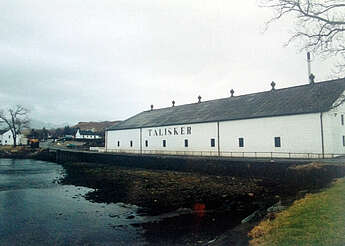
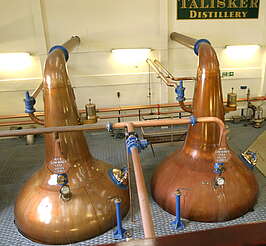
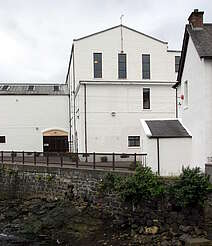

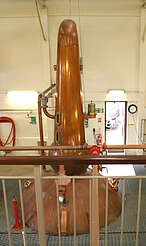
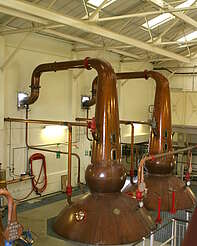
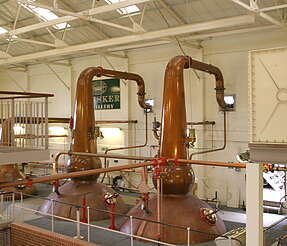
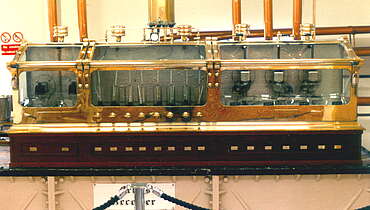
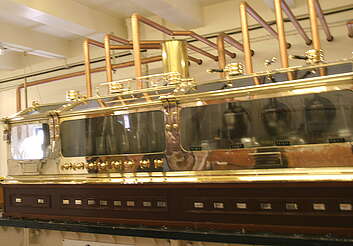
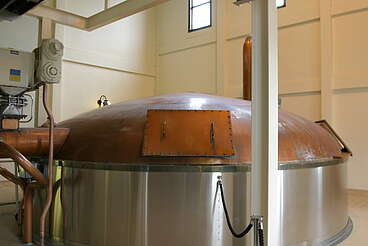
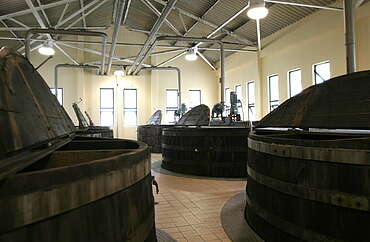
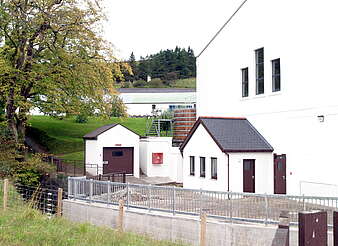
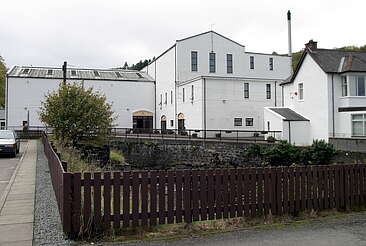

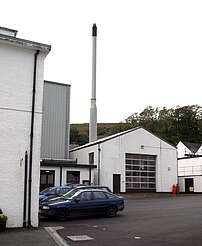
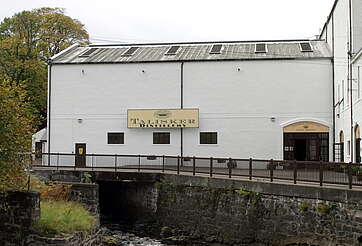
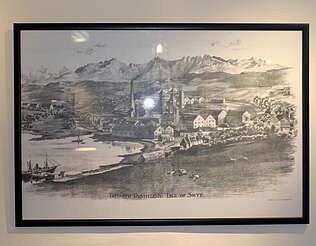
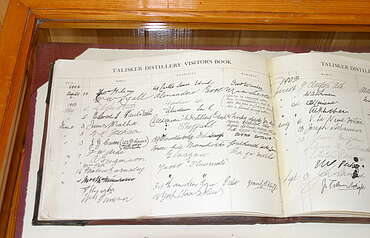
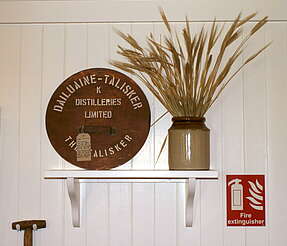
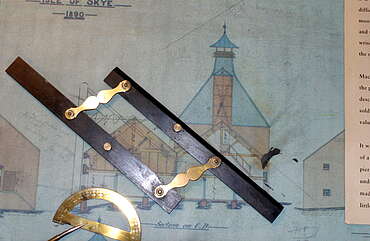
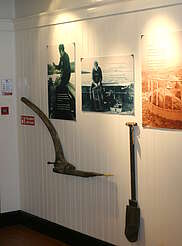
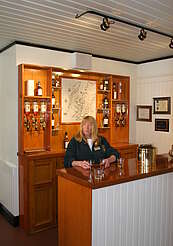
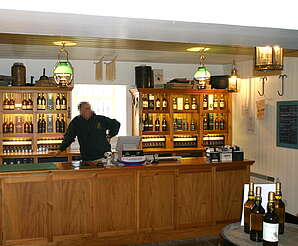
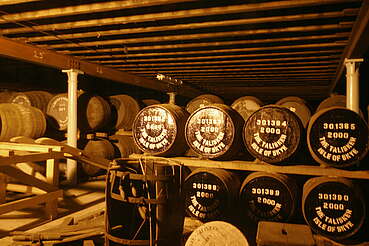


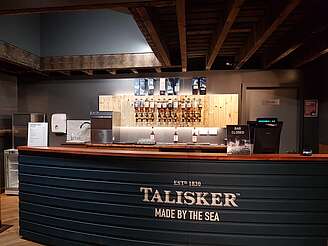
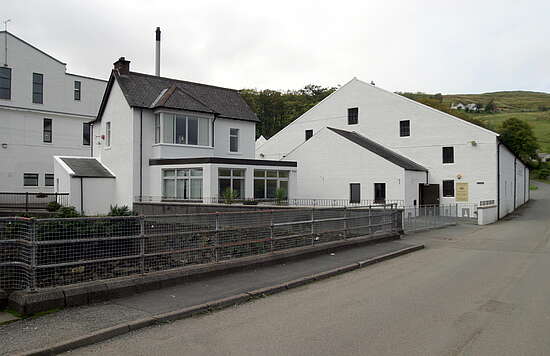

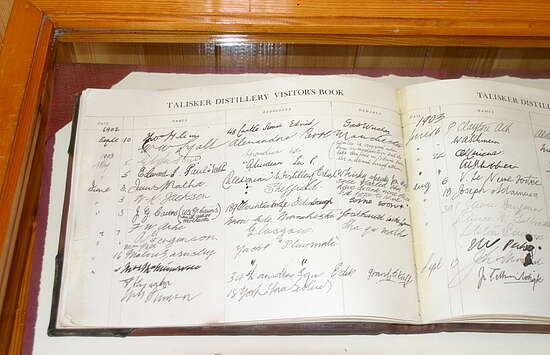
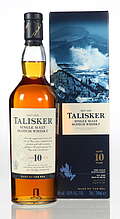
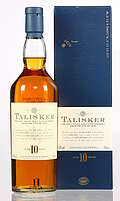
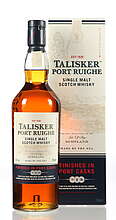
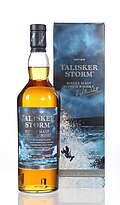
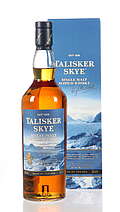
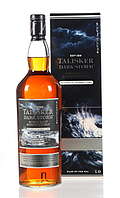
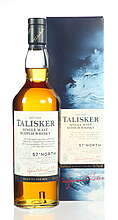
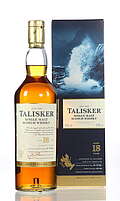
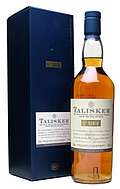













User Notes about the Distillery
Share your experience with other whisky lovers. Write a note about your trip to the Talisker distillery.
funny thing, almost to the date, when the above Pictures where taken, my girlfrind and I where at Talisker destillery, as part of a round trip to Scotland, celebrating my 50th birthday.
It was a great visit to Talisker and well worth visiting. They have a guided tour through the distilliry. A Word of warning though, if your English is not your "second" language as it is for me and most of my Fellow danes, you will have to be on your toes. The guide we had was a sweet Young girl with a scottish accent so thick, you could cut it with a knife :-)
At the end of the tour there is a tasting venue. I and they have a substantial gift and whisky shop. As with most of distillries your best of buying your Talisker at your local whisky shop. Though keep an eye out for those special on location only whiskies.
When you have finished the tour, or before you visit the distilery, walk or drive around the distiliry up the road. If you like oysters there is a Little place located in a barn selling fish and fresh cought oysters from around the bay at the end of the road.
Stig (Denmark)